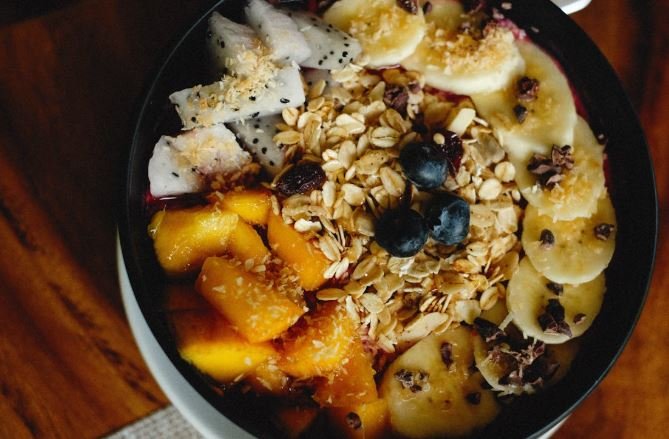In a world where sugary treats are a staple in many diets, the rise of sugar-free dessert recipes has been a game-changer for health-conscious individuals looking to satisfy their sweet cravings without compromising their well-being. But are sugar-free dessert recipes truly the healthiest option, or are they simply a trap that leads to flavorless alternatives? In this article, we’ll explore the pros and cons of sugar-free dessert recipes, and help you determine whether they’re a healthy choice or a missed opportunity for indulgence.

The Allure of Sugar-Free Desserts
The primary appeal of sugar-free dessert recipes lies in their promise to deliver the sweetness we crave without the unwanted health effects of traditional refined sugar. For individuals who are watching their calorie intake, managing blood sugar levels, or following a low-carb diet, sugar-free dessert recipes offer an alternative that can align with their health goals.
Sugar substitutes, such as stevia, erythritol, and monk fruit, are commonly used in these desserts to mimic the sweetness of sugar without the associated calories or spikes in blood glucose. For people with diabetes, sugar-free desserts can help curb cravings for sweet treats without negatively impacting insulin sensitivity or blood sugar control.
The Benefits of Sugar-Free Dessert Recipes
- Lower Calorie Count
One of the most obvious advantages of sugar-free dessert recipes is their ability to reduce calorie consumption. Traditional sugary treats can be packed with empty calories, contributing to weight gain over time. By replacing sugar with low-calorie sweeteners, sugar-free dessert recipes allow individuals to indulge in a dessert without going over their daily calorie limit. - Better Blood Sugar Control
For those with diabetes or anyone trying to maintain stable blood sugar levels, sugar-free dessert recipes can offer a safer alternative to sugar-laden desserts. The right sugar substitutes don’t cause rapid spikes in blood sugar, allowing you to enjoy a treat without disrupting glucose metabolism. - Improved Oral Health
Unlike sugary desserts that can contribute to tooth decay, sugar-free dessert recipes are much gentler on your dental health. Since sugar is a primary cause of cavities and tooth decay, switching to sugar-free alternatives can help protect your teeth, making it easier to indulge in sweets without guilt. - Helps with Weight Management
Incorporating sugar-free dessert recipes into a healthy diet can be a beneficial tool for weight management. By reducing sugar intake, you reduce your overall calorie consumption, helping you maintain a healthy weight. These desserts can fit into a variety of diets, including keto, paleo, or low-carb plans, without compromising your fitness goals.

The Potential Downsides of Sugar-Free Dessert Recipes
While sugar-free dessert recipes certainly have their benefits, they’re not without their potential drawbacks. Here are some of the concerns you might want to consider:
- Taste and Texture Issues
One of the most common criticisms of sugar-free dessert recipes is that they can sometimes fall short in terms of flavor and texture. Some sugar substitutes may leave a bitter aftertaste, making the dessert less enjoyable. Additionally, sugar plays a role in the texture and mouthfeel of desserts—providing moisture, crispness, or thickness. Without sugar, achieving the same texture can be challenging, leaving some sugar-free treats feeling dry, crumbly, or too dense. - Sugar Substitutes and Health Concerns
While many sugar substitutes are generally considered safe, some people may experience digestive discomfort from certain sugar alcohols like erythritol or xylitol. These ingredients can cause bloating, gas, or laxative effects in sensitive individuals, leading to an unpleasant experience. Additionally, some studies suggest that artificial sweeteners may alter the gut microbiome, potentially leading to long-term health concerns. - Hidden Ingredients and Additives
Not all sugar-free dessert recipes are created equal. Some commercially produced sugar-free options contain a variety of added chemicals, artificial sweeteners, and preservatives that can negate the health benefits of reducing sugar. It’s essential to carefully read labels and choose desserts that use natural sweeteners and wholesome ingredients to ensure you’re getting the best possible option. - Overindulgence in Other Ingredients
Another concern with sugar-free dessert recipes is that some individuals may assume they can eat these treats in unlimited quantities without consequence. Just because a dessert is sugar-free doesn’t mean it’s calorie-free or healthy. Many sugar-free treats still contain fats, refined flour, and other high-calorie ingredients, which can lead to overconsumption and potentially undo the benefits of avoiding sugar.
How to Make the Most of Sugar-Free Desserts
If you’re looking to incorporate sugar-free dessert recipes into your diet, there are a few key guidelines to follow to ensure you get the most out of these treats:
- Use Natural Sweeteners
When making sugar-free dessert recipes, opt for natural sweeteners like stevia, monk fruit, or erythritol, which have minimal impact on blood sugar levels and offer a more authentic sweetness. Avoid artificial sweeteners like aspartame or saccharin, as they can have a negative impact on your overall health when consumed in large quantities. - Incorporate Whole, Unprocessed Ingredients
Focus on whole foods like almonds, coconut, and avocado to add richness and texture to your desserts. These nutrient-dense ingredients provide healthy fats, fiber, and vitamins that can enhance the nutritional value of your desserts. - Balance Your Macros
Even if your dessert is sugar-free, make sure it is still balanced. Include a good mix of healthy fats, fiber, and protein to make your sugar-free dessert more satisfying and nourishing, rather than simply a source of empty calories. - Enjoy in Moderation
As with any treat, moderation is key. Don’t overindulge in sugar-free dessert recipes just because they don’t contain sugar. Enjoy them as part of a balanced, healthy diet, and be mindful of portion sizes to avoid unnecessary calorie intake.

If you’re managing diabetes or simply looking for ways to reduce sugar intake, incorporating sugar-free dessert recipes can be a great solution. However, it’s not just desserts that can help you maintain a balanced diet. Many delicious sugar-free snacks for diabetics can keep your blood sugar stable throughout the day. Whether you’re looking for a quick snack or something to pair with your dessert, these sugar-free options can support your health goals while satisfying your cravings. To discover more tasty and diabetic-friendly snack ideas, check out our article on Delicious Sugar-Free Snacks for Diabetics.
Conclusion: The Sweetest Way to Stay Healthy or a Taste Bud Trap?
In the end, whether sugar-free dessert recipes are the sweetest way to stay healthy or a taste bud trap depends largely on your goals, preferences, and how you approach these alternatives. If you’re aiming to reduce sugar intake, manage blood sugar levels, or improve oral health, sugar-free dessert recipes can be a great addition to your diet. However, it’s important to be cautious about the ingredients you choose and to avoid overindulgence. Ultimately, the key to a healthy lifestyle lies in moderation and balance, whether you’re enjoying traditional sweets or sugar-free treats.
By making informed choices, you can enjoy the best of both worlds—satisfying your sweet tooth while staying on track with your health goals. So, are sugar-free dessert recipes your new favorite treat, or are they simply a passing fad? The decision is yours to make!



